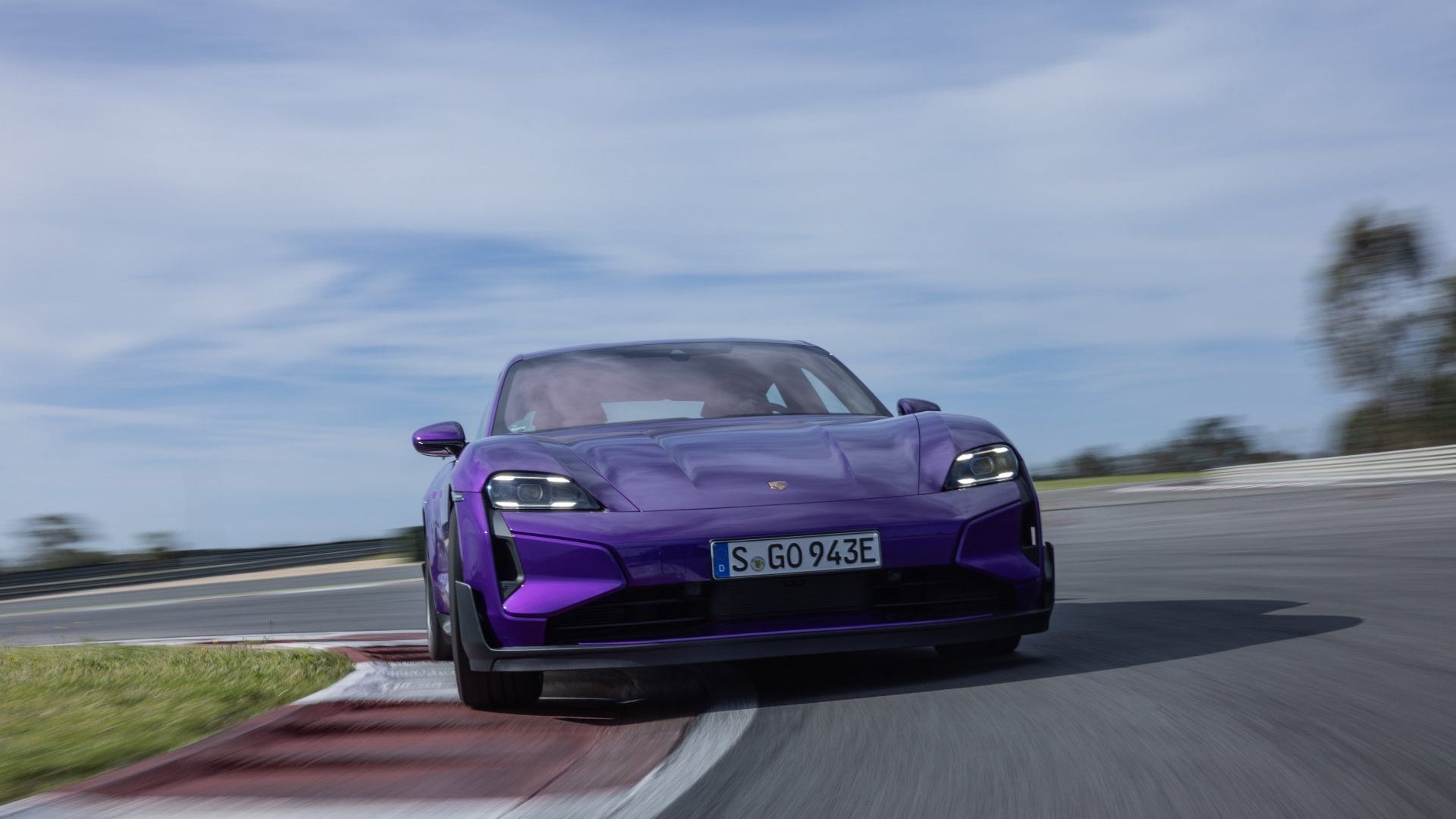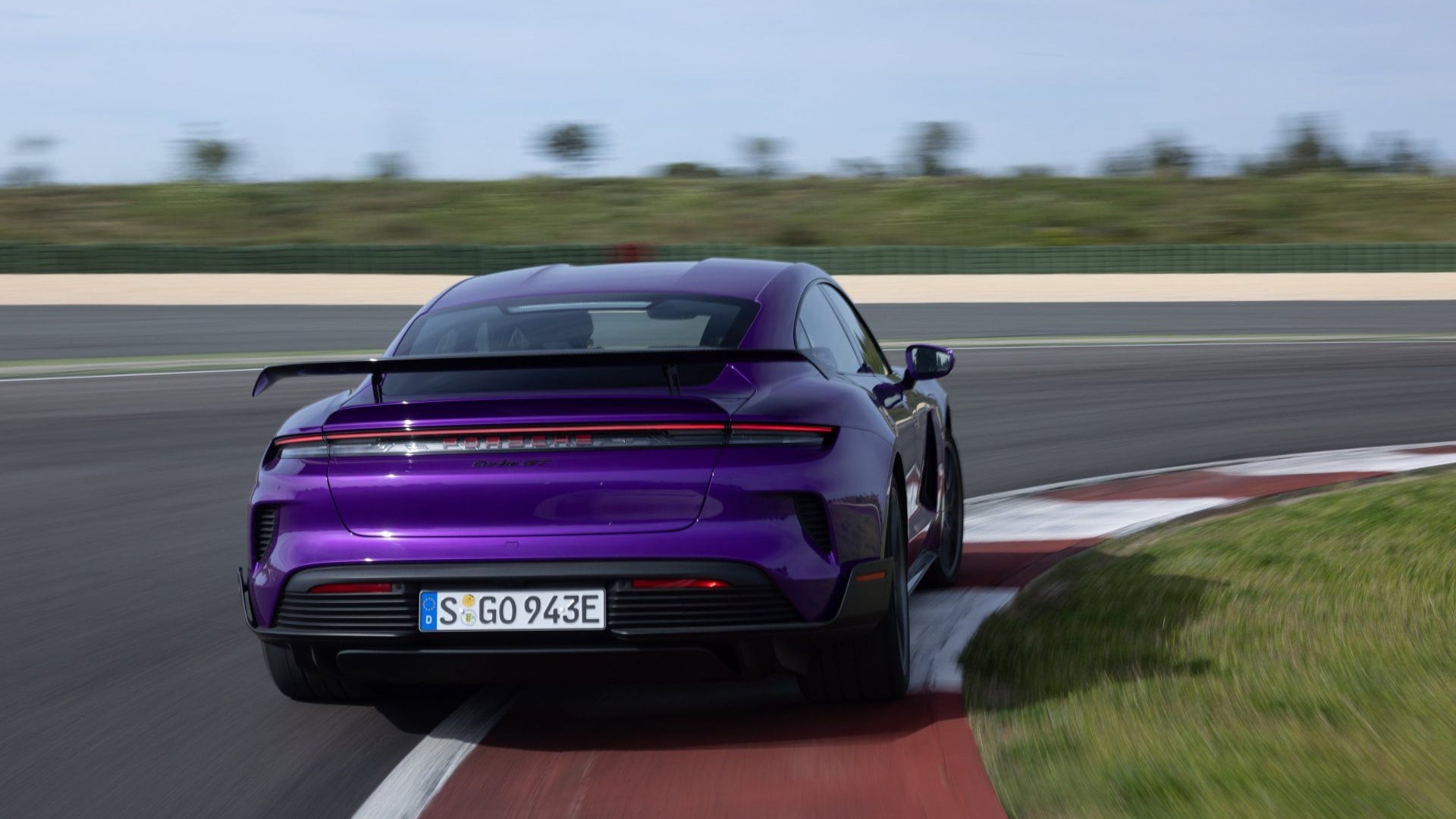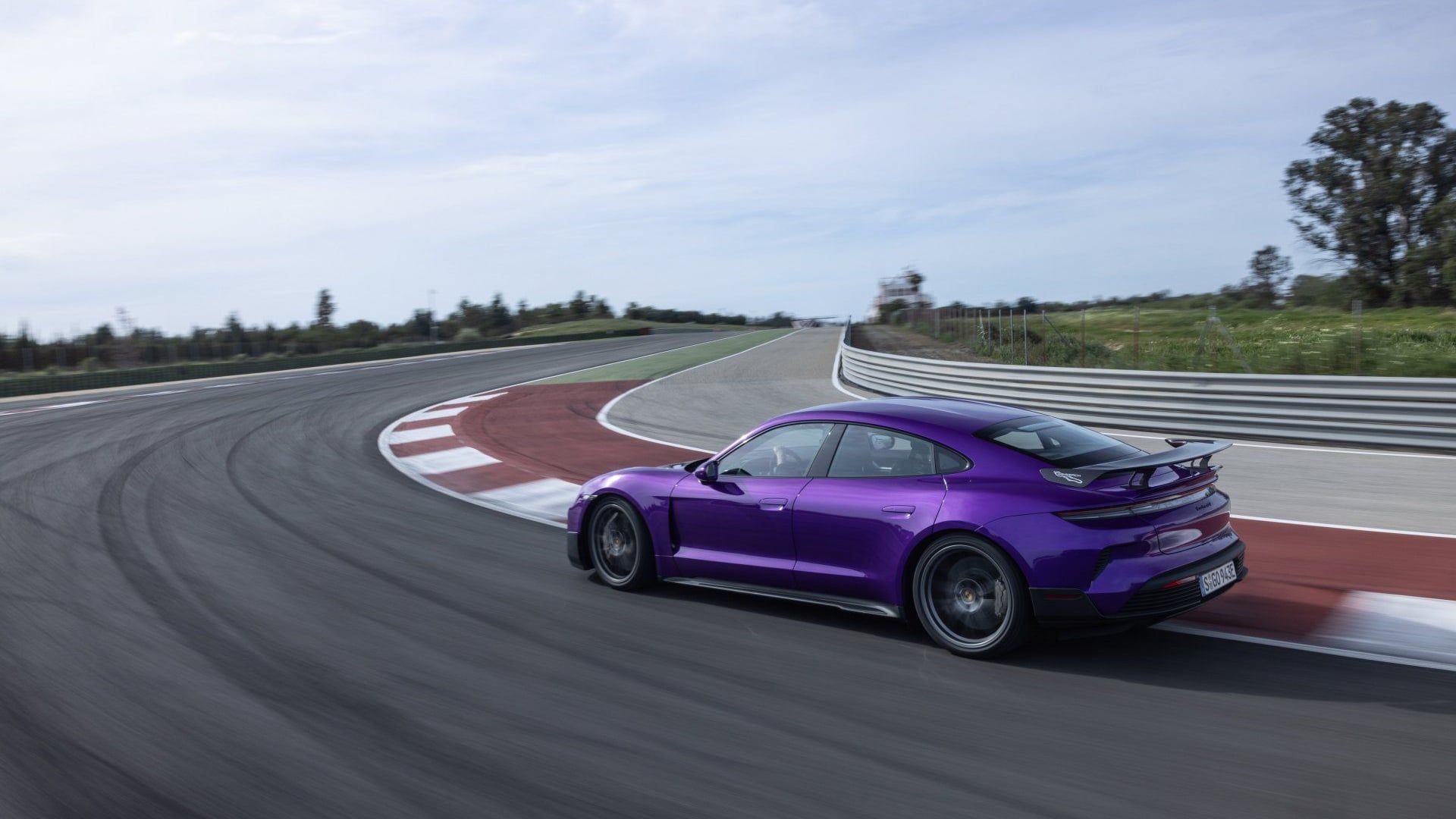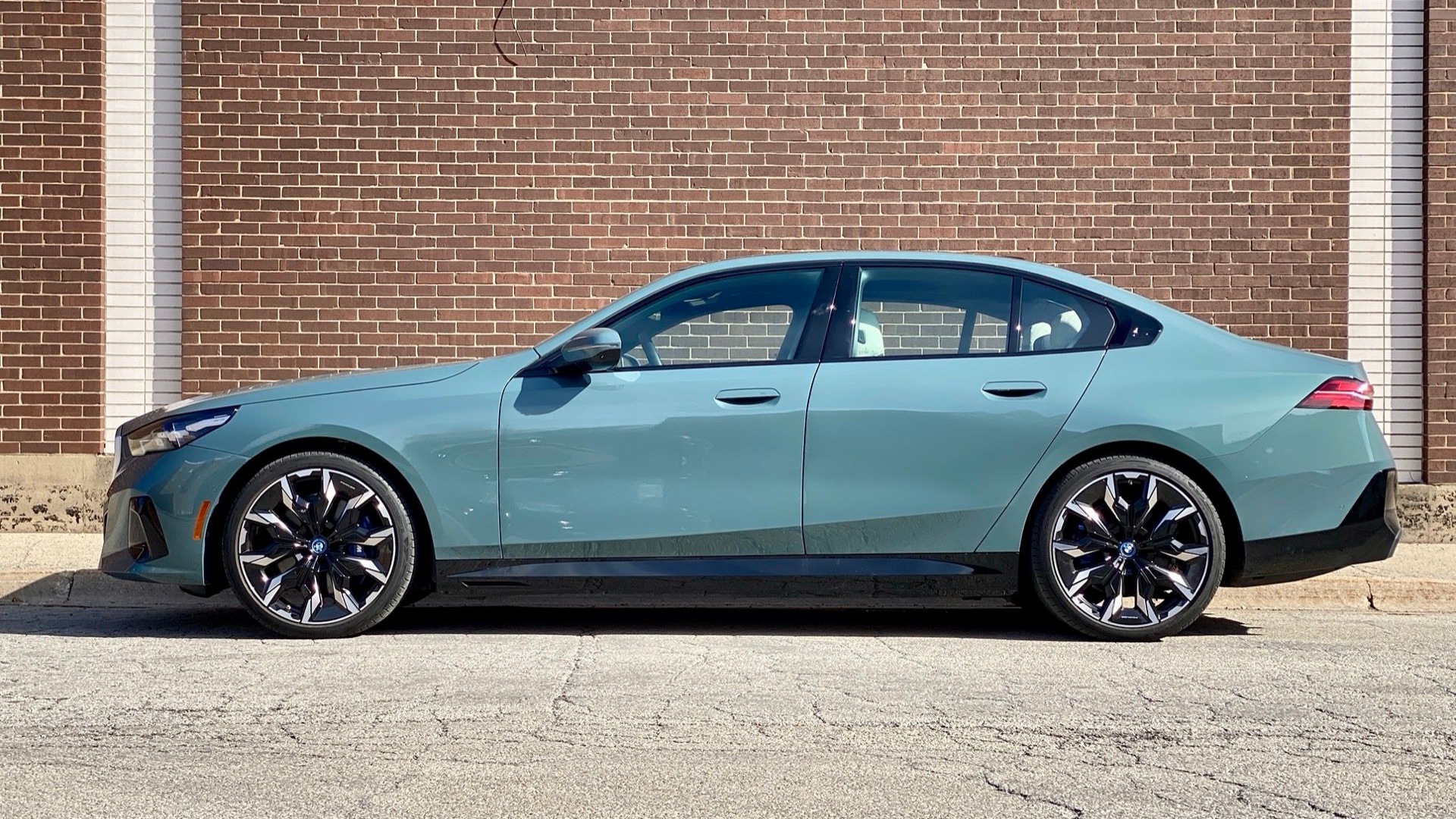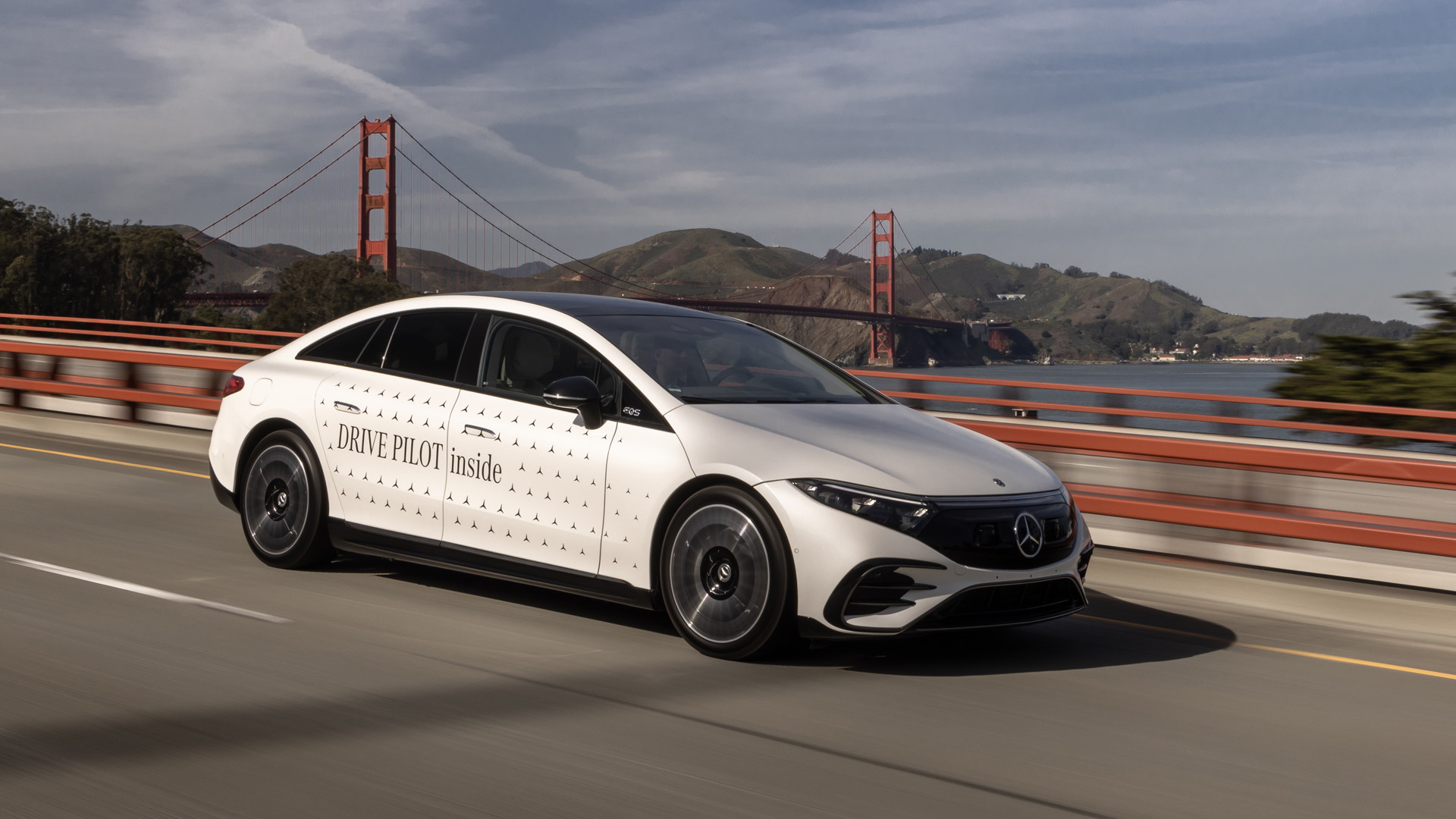If you live for the novelty of one-off drag races, there are a great many EVs claiming acceleration numbers close to the 2.2 seconds claimed by the 2025 Porsche Taycan Turbo GT.
But EVs that have to pull over and cool the battery pack or motors after just a few short laps amount to cheap thrills that only did the easy part. As Porsche boasts, it’s the handling and dynamics, the record track times, and continuing to blast out the forward propulsion while pulling ridiculously high lateral Gs that the Taycan Turbo GT was made for.
Calling Plaid, calling Sapphire
Even among performance EVs, the Taycan Turbo GT is hardcore. Porsche conceived it to be able to complete a full, grueling lap of Germany’s benchmark Nürburgring Nordschleife—that’s nearly 13 miles—all-out with a professional driver, in near-showroom-stock form, on a warm summer day, without hitting the 60-degree Celsius battery temp that triggers the Taycan to dial back power.
Porsche, by the way, did that last year—powering through a lap in just 7:07.55, almost matching the current lap record set by the Rimac Nevera, an electric hypercar. The Taycan also set a record at Laguna Seca.
All the while, the Taycan has been made more practical, through some key battery, thermal, and efficiency improvements that make the most of the 800-volt J1 platform that Porsche developed specifically for the Taycan.
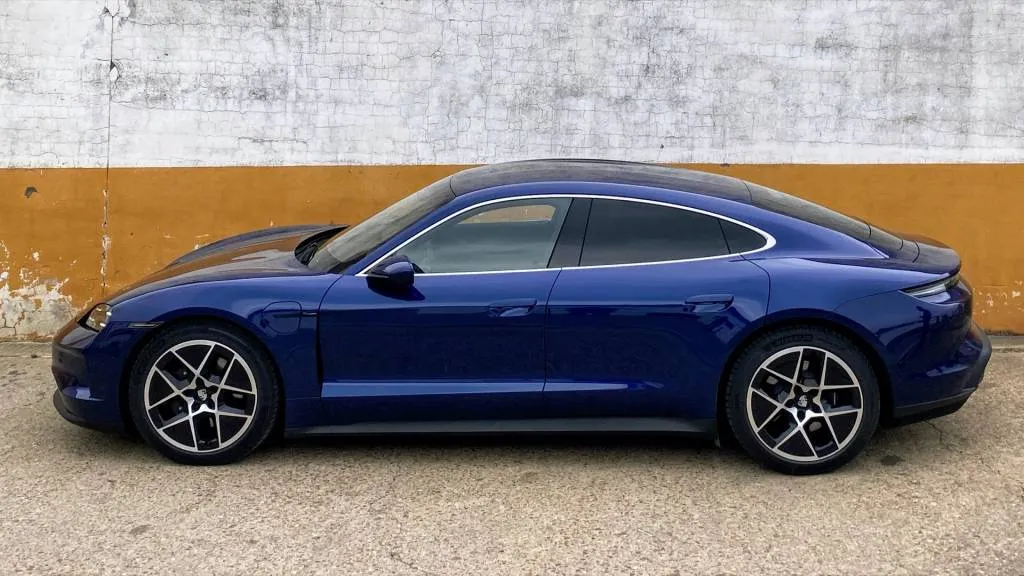
2025 Porsche Taycan
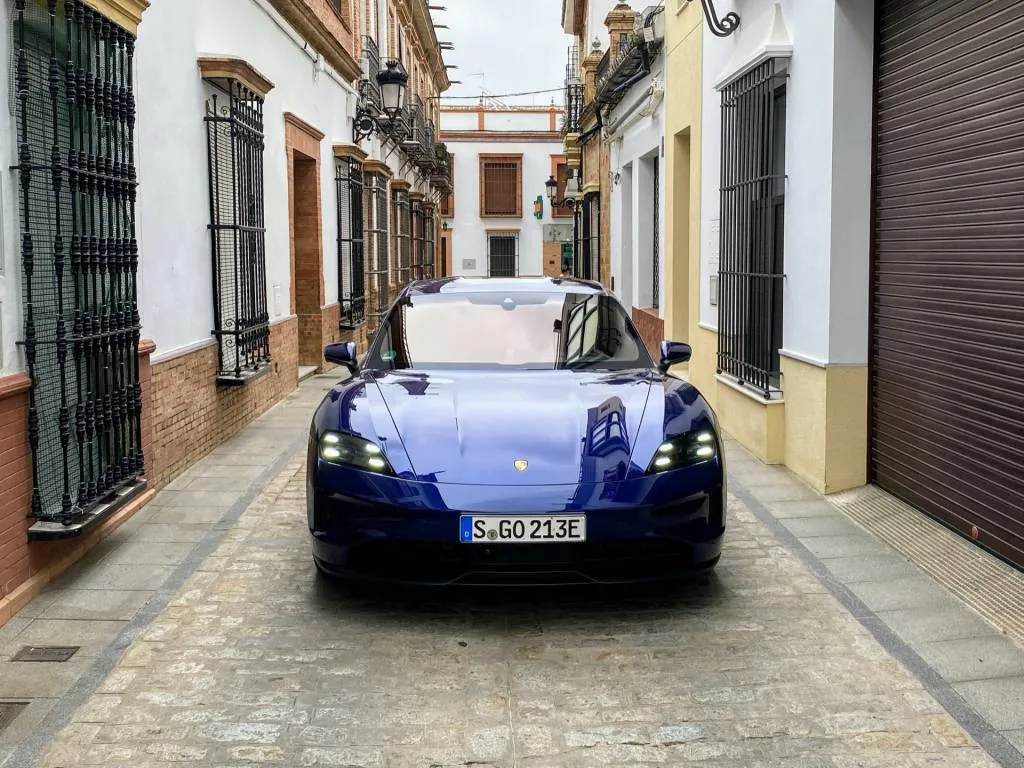
2025 Porsche Taycan

2025 Porsche Taycan
It’s likely that much of the lineup will be rated at more than 300 miles of EPA range with these improvements. A somewhat larger battery pack with 97 kwh of usable capacity helps it get there, but a revised battery chemistry and thermal improvements help enable peak charge rates and peak performance at lower temperatures than before.
That makes the entire lineup of Taycan versions, like the base car in the pictures above—covered more extensively and on the road with a 2025 Porsche Taycan review at Green Car Reports—more likely to “catch the curve” for the quickest charge possible. That means a 10-80% charge time in as little as 18 minutes, with a higher peak power of 320 kw from a CCS connector.

2025 Porsche Taycan Turbo GT
Taycan charging and track time: Keeping cool is key
According to Porsche, improvements made to the Taycan’s thermal systems make it not only better in cold weather and charging times but also out on the track. For the latter, the Turbo GT and Turbo GT with Weissach Package are the models in the lineup that bring the Nürburgring pedigree to your own garage—and weekend track time.
The Taycan has a track conditioning mode that cools the battery down to a minimum of 12 C, which Porsche chassis development manager Christian Wolfsried told Motor Authority is a sweet spot for still having maximum power but also having a cool battery that still has a long way to go before reaching 60 degrees, where the pack is too hot and the powertrain will lower its output.
To give you an idea of just how well the Taycan keeps its cool, the battery-pack temperature for the car I was in, which had already been used for a series of other hot laps and launches, was at 34 degrees—nowhere close to any concern.
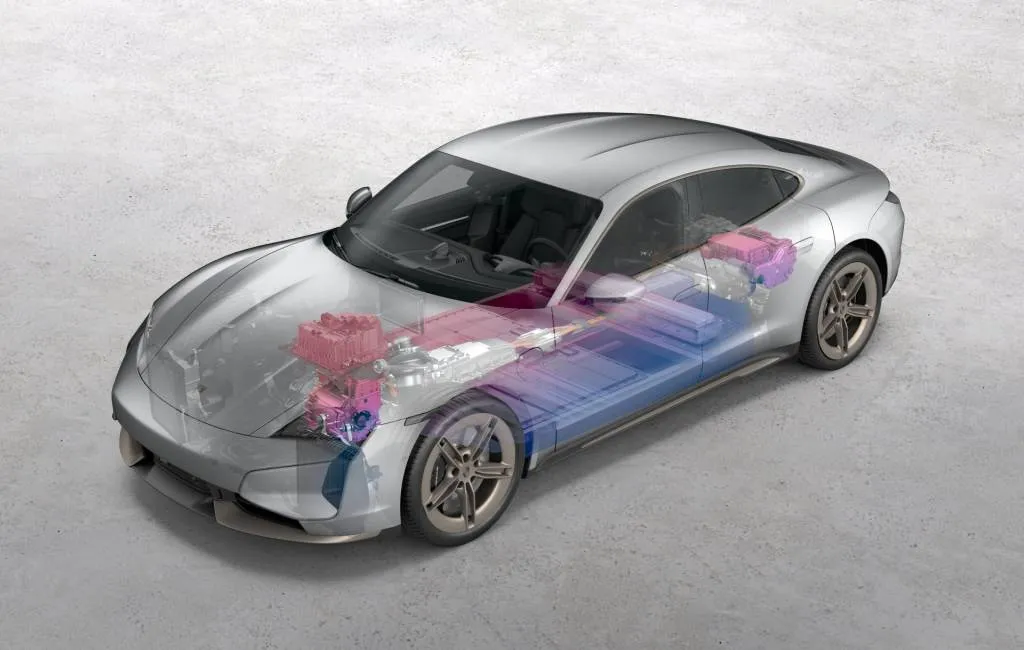
2025 Porsche Taycan
There are still essentially three cooling circuits for the Taycan, in a configuration that hasn’t changed, although the cooling power itself—from a new 800-volt A/C compressor—is vastly improved.
The Turbo GT and Weissach Package models will indeed take advantage of that added cooling. They both produce 777 hp and 855 lb-ft of torque, with a lower ratio for a more robust version of the two-speed dog-ring gearbox that saves its low gear for launches and all-out performance driving. In the Taycan’s launch control functionality, activated simply by holding the brake pedal firmly with your left foot while flooring and releasing the accelerator, it produces up to 1,019 hp and 988 lb-ft—or 1,092 hp for a 2.0-second blast.
The higher outputs come via an even higher-power motor in back than what’s installed in the Turbo S, commanded by a special 900-amp inverter, versus the 600-amp unit for the rest of the lineup,
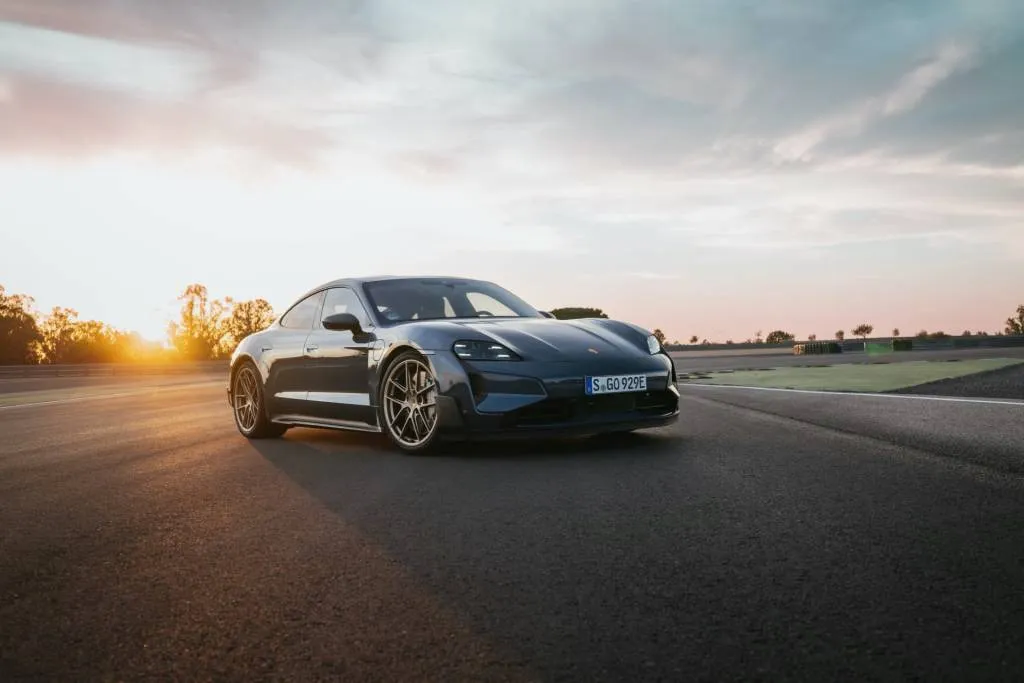
2025 Porsche Taycan Turbo GT
Luxury Turbo GT sports car, or Weissach race car?
Beyond the Taycan Turbo S, the Turbo GT is intended to have an increased focus on dynamics and performance, in a package that remains a four-seat grand-touring car. Shift to the 2025 Taycan with Weissach Package, and you strip some of the luxury away, with a whole list of weight-saving measures and performance items essentially turning the Taycan into a street-legal race car.
Either way, these models have an air suspension plus Porsche’s attitude-flattening, hydraulic-based Active Ride suspension, and they ride on staggered-width Pirelli P Zero R and Trofeo RS summer performance tires—P265/35ZR21 in front, P305/30ZR21 in back—mounted on lightweight forged wheels. Pirelli says these tires have exceptionally strong sidewalls and a compound combining heat resistance, minimized noise, and all the traction these performance models need. The sidewall profile and bead of the tire were even considered in the Taycan’s aerodynamics. The Trofeo RS particularly was proven with the Taycan at Laguna Seca and the Nürburgring, while the R is touted as good for the track, yet for daily use.

Porsche Taycan Turbo GT and Weissach package, at Monteblanco circuit
In pit lane, I get into a Turbo GT and find that from the seats to interface it has much in common with lesser trims of the Taycan—just dressed up a bit with a chunky suede steering wheel and paddle-shifters. And of course with hundreds more horsepower on tap. The button on a rotary steering-wheel toggle, atop the drive mode selector, activates “Attack Mode,” which is then spelled out on the lower right portion of the gauge screen.
While the Push-to-Pass feature in other Taycan models adds up to 94 hp (70 kw) for 10 seconds, Attack Mode adds up to 161 hp (120 kw) for 10 seconds at a time, and it flips to a simplified gauge display, customized sound, and performance driving mode. While the Push-to-Pass feature needs 10 seconds before it can be re-upped, Attack Mode can be used again after just a 4.0-second pause as battery temperature permits. A pull of the right paddle also activates Attack Mode, while the left paddle ramps up recuperation.
Hot laps and high limits
I get rolling In laps of the Circuito Monteblanco in southern Spain, near Seville, learning its combination of abrupt, mostly unbanked corners, brief straight sections where it’s easy to accumulate too much speed, and one elevation peak that challenges stability. It’s hard to find a rhythm with the course in just three hot laps, but I take away that the Turbo GT has capabilities beyond what I’ll reach—tenacious traction, crisp handling and communication through the steering wheel, as well as traction and stability systems willing to work with all the lateral Gs I dare throw at it.
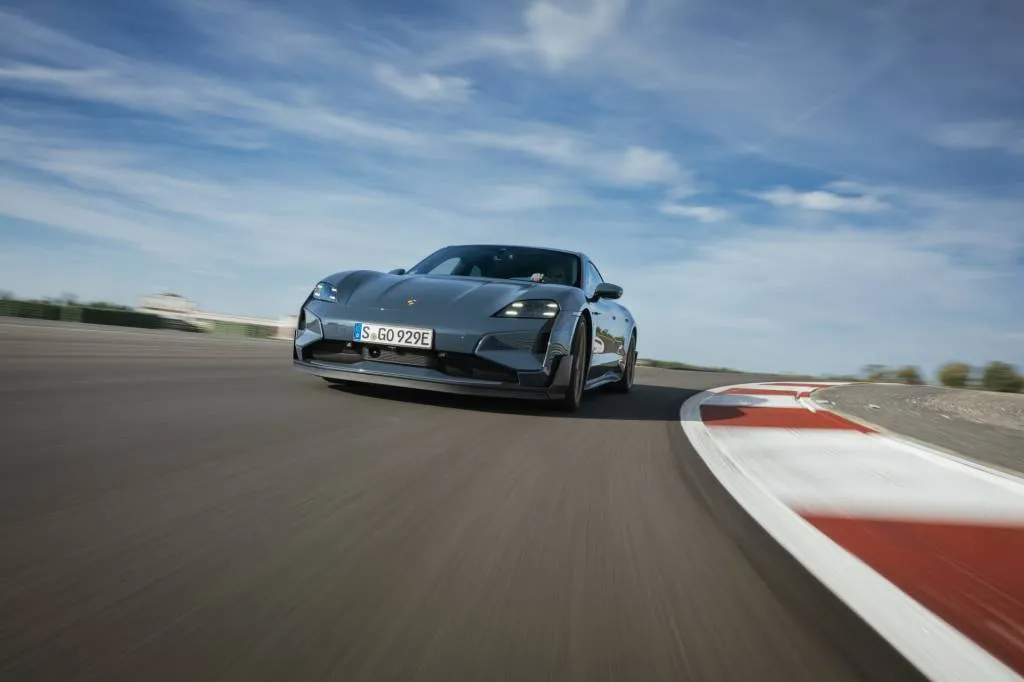
2025 Porsche Taycan Turbo GT
Credit, at least in part, goes to Porsche’s Active Ride suspension, which applies distinct loads at each wheel based on dynamics and momentary needs, helping provide “an optimal connection to the road,” as Porsche says. The very system that isolates the Taycan from the busy road surface on choppy road surfaces plays a different role on the track—essentially choosing the perfect load for each wheel to keep me stable on the smooth track surface.
Throughout the Taycan lineup, whether it’s one of these versions truly intended for hot laps or one of the others offering up sports-car handling and dynamics, steering is precise and you sit low with the battery pack’s mass, not seemingly on it as in so many other EVs. It’s easy to forget you’re in a 5,000-pound vehicle.
The Turbo GT also has a different version of its simulated sound—one that’s lower and coarser, with a robustness that reminds me of the 911 GT3. Especially under acceleration, I hear the rear motor in this model much more than in other Taycans driven the same day on the road, as well as an abrupt change in whine as the gearbox clicks from low to high.
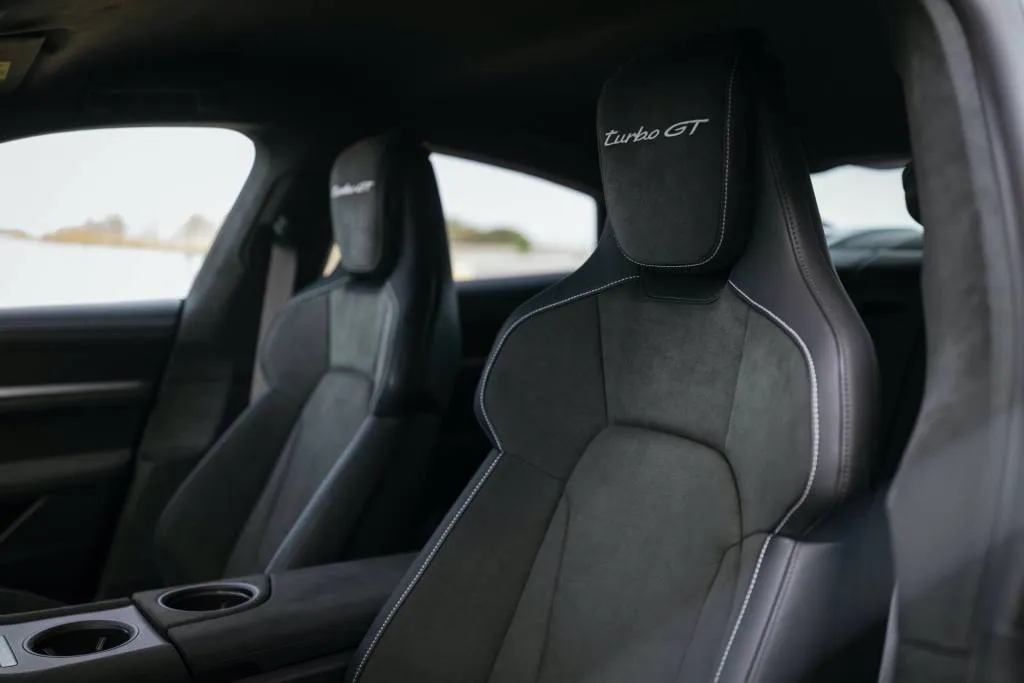
2025 Porsche Taycan Turbo GT
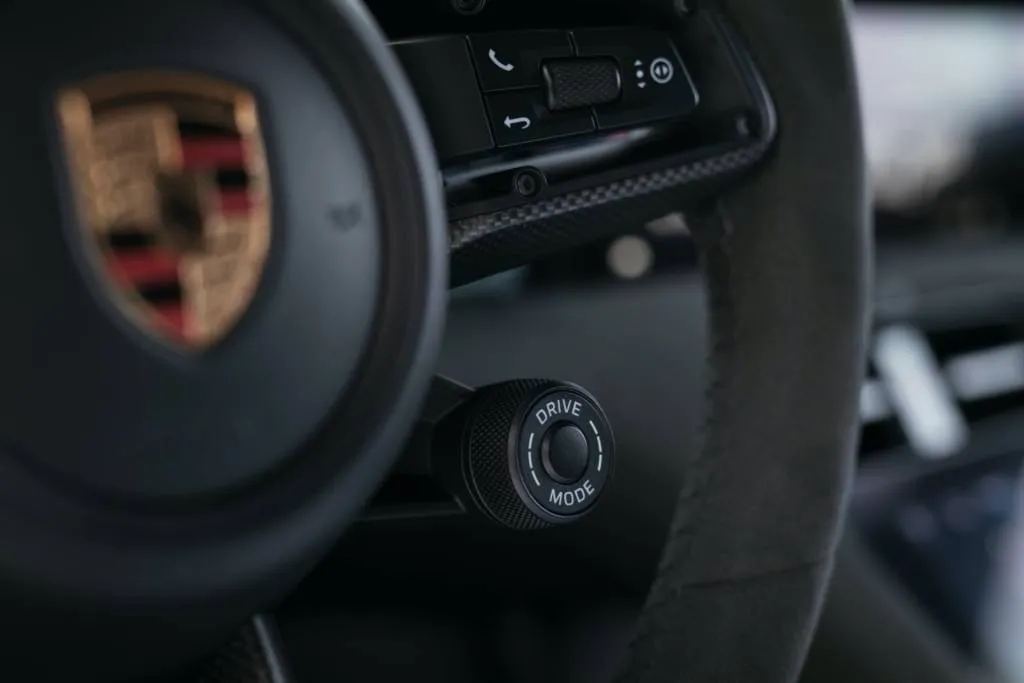
2025 Porsche Taycan Turbo GT
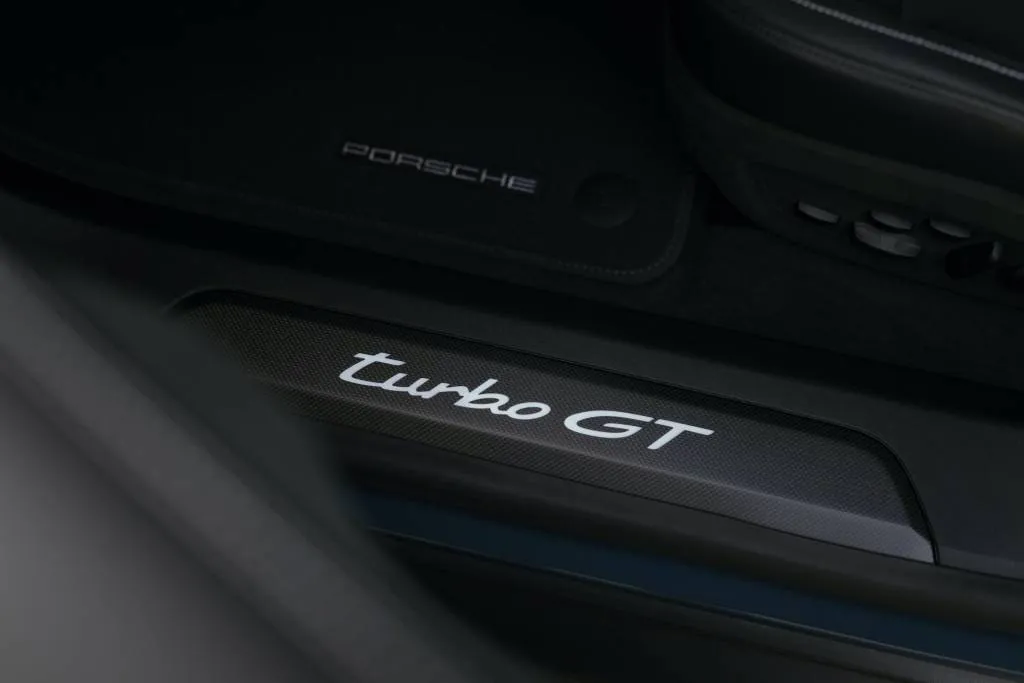
2025 Porsche Taycan Turbo GT
Weissach Package: Tuck one away in the paddocks?
That’s just half of the pair of peak-performance Taycans, due to arrive to U.S. dealerships starting in summer 2024, that my track time at Monteblanco last month was split between. The Weissach Package, built off the Turbo GT and starting at the same $231,995, is the other.
Essentially replicating that Nürburgring car, the Weissach gets optimized aerodynamics, with a new front diffuser and fixed rear wing, to altogether help provide better stability and more downforce—up to 303 pounds, with 484 pounds of total additional downforce from overall aero at 190 mph.
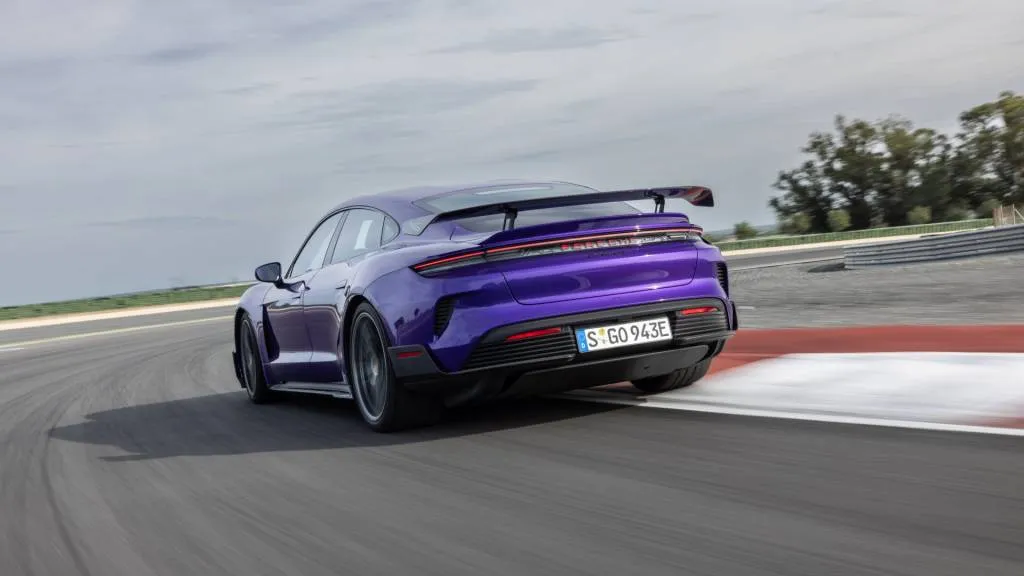
2025 Porsche Taycan Turbo GT Weissach package
The Weissach feels born to just live at the track and be tucked away in the paddocks in between hot lap time—or with a fleet manager. But it’s a car that’s also ready for a run down nearby backroads to a nearby small town for some afternoon cappuccinos.
I can’t say for sure that I note or appreciate that the Weissach version is 157 pounds lighter than the Turbo GT, but over three more laps I noted that the sensory experience is simply different. There’s definitely more road noise inside, likely propagated by the carbon fiber, the deficit of insulation, and other weight-saving measures.
With all else carried over from the Turbo GT propulsion-wise, the weight savings does help shave a few fractions of seconds off acceleration times. It accelerates to 60 mph in 2.1 seconds (versus 2.2) and can get to 124 mph in 6.4 seconds (versus 6.6).
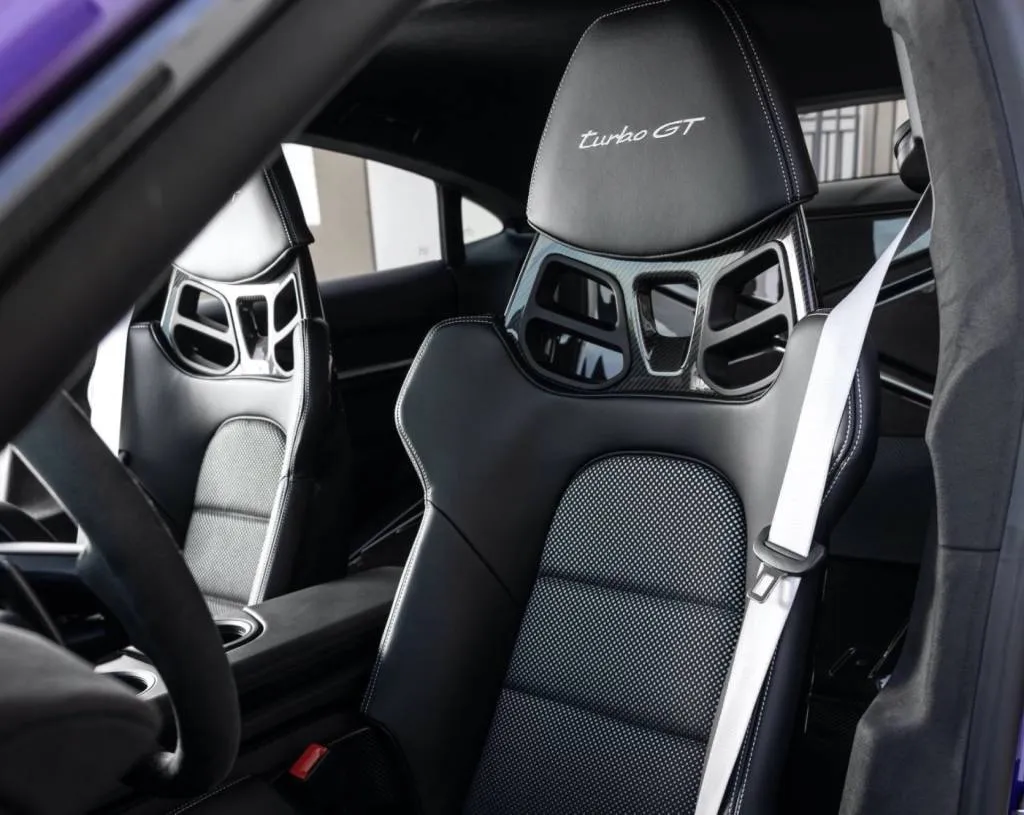
2025 Porsche Taycan Turbo GT Weissach package
The Weissach’s weight-saving carbon-fiber seats also look right for the track but bring a few downsides. They’re essentially a hard racing seat with some strategic cushioning and bolstering. You can’t adjust the rake or the tilt of the cushion, and at 6 feet 6 inches tall, I was definitely used to something more upright. An all-out launch control start in this model versus the Turbo GT emphasized what a difference seats make. While the GT’s seats had enveloped me snuggly, with only the Gs to think about, the same forces yanked my shoulder blades rearward into the carbon-fiber frame in the Weissach.
The other pet peeve regards braking and recuperation. All dual-motor Taycan models can now generate up to 400 kw in brake recuperation/regeneration. But with most of it left for the brake pedal, I noted that the transition to friction pads and their perceived “bite” varied too much depending on speed. In this brake-by-wire system, I’d learn the behavior eventually, but it doesn’t feel as consistent as it should at the outset. As a footnote to this, it may also have something to do with the standard ceramic composite brakes in these models.

Porsche Taycan Turbo GT and Weissach package, at Monteblanco circuit
Regen befitting a track EV?
Porsche continues to favor coasting and light regen in the Taycan, but on the track a mode with a much higher regen level and more traditional brake feel might be preferred by some track enthusiasts.
Porsche hasn’t revealed EPA range numbers for any of the 2025 Taycan lineup yet, but it suggests that the Turbo GT’s performance gains won’t come for free at the charger either. Based on European WLTP numbers, it might offer about 88% of the range of the Turbo S model. While it’s hard to estimate how much of the Taycan lineup will land with EPA ratings above 300 miles, these are the models that are likely to arrive below that mark.
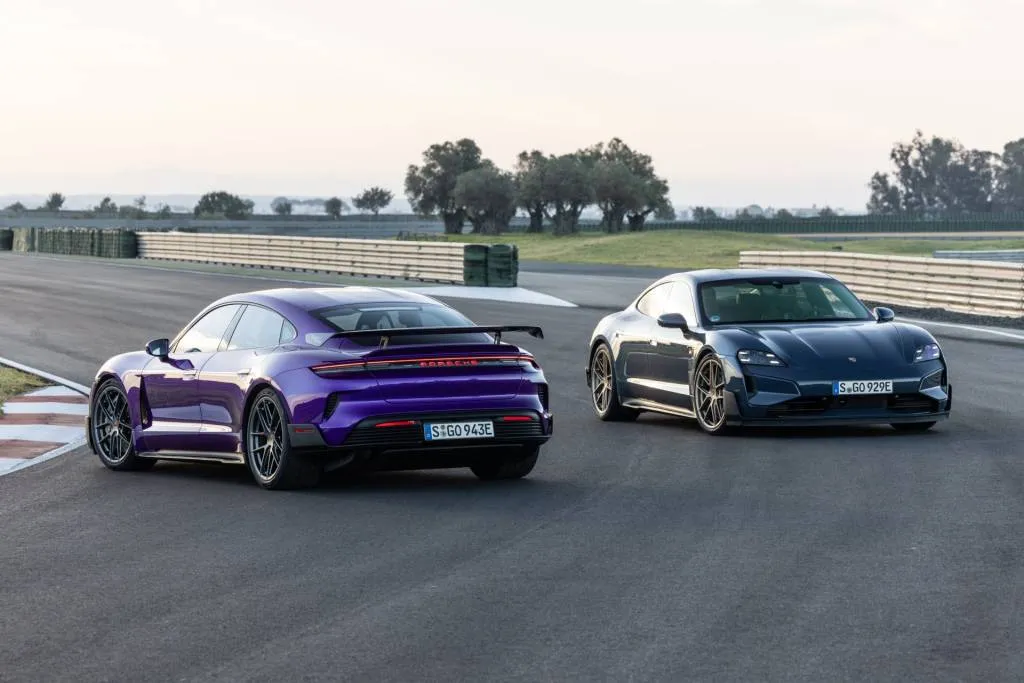
2025 Porsche Taycan Turbo GT Weissach package
With its revamped 2025 Porsche Taycan, the esteemed brand chose wisely, keeping the look and packaging intact while emphasizing the range, performance, and efficiency—and that all pays dividends. The same tech that’s helping this EV keep its cool at the track and at the charger, in turn, makes its performance more scorching than ever.
Porsche covered some travel, accommodations, and meals to facilitate vehicle and track access.
